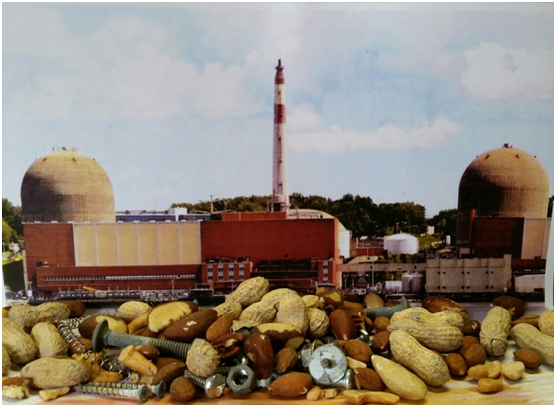By Manna Jo Greene, Environmental Action Director

Following transformer fires, explosions with oils spills, bird droppings causing electrical disturbance in the switchyard, a pump failure resulting in massive leaks of radioactive tritium and other radioactive isotopes into the groundwater under the plant and other unplanned outages, the latest finding at Indian Point is discovery of hundreds of faulty, loose and rusted BOLTS in or missing from the core former, a structure which surrounds the nuclear fuel in the reactor and directs water through the system.
Discovered on inspection during a routine outage of Indian Point Unit 2, this aging, leaking 42-year old reactor at the Indian Point Energy Center has been operating with an expired license since 2013. Immediately next to IP-2, the 40-year old reactor at Indian Point 3, is still actively operating, also on borrowed time, and there is no reason to believe its bolts are any less damaged.
IP-3 should be closed and immediately inspected – not allowed to operate until the next planned or unplanned outage occurs. Both IP-2 and IP-3 have dangerously overcrowded fuel pools, which hold more spent — but still highly radioactive — nuclear waste than was stored at Fukushima when the tsunami hit. This amounts to four to five times the number of fuel rods than the original design basis intended, creating the potential for a spontaneous fuel pool fire at Indian Point. Given that the November 2015 NYS Department of State Coastal Zone Management Consistency Determination and many other studies have shown that the energy generated by Indian Point is clearly not needed, the fact that evacuation would be virtually impossible in the event of a catastrophic accident or incident at Indian Point, and the reality that the risks greatly outweigh its benefit, it is simply NUTS to allow the continued operation of Indian Point to endanger the 20 million people who live or work within the 50-mile peak injury zone surrounding the plant and beyond.





